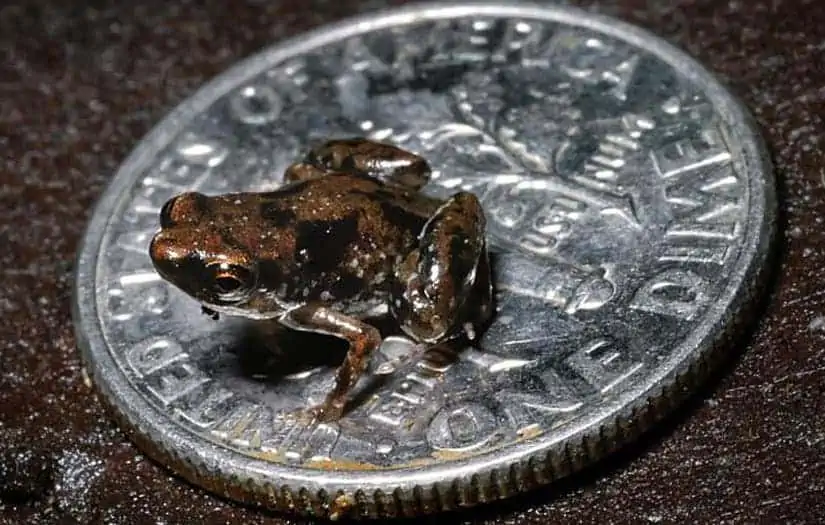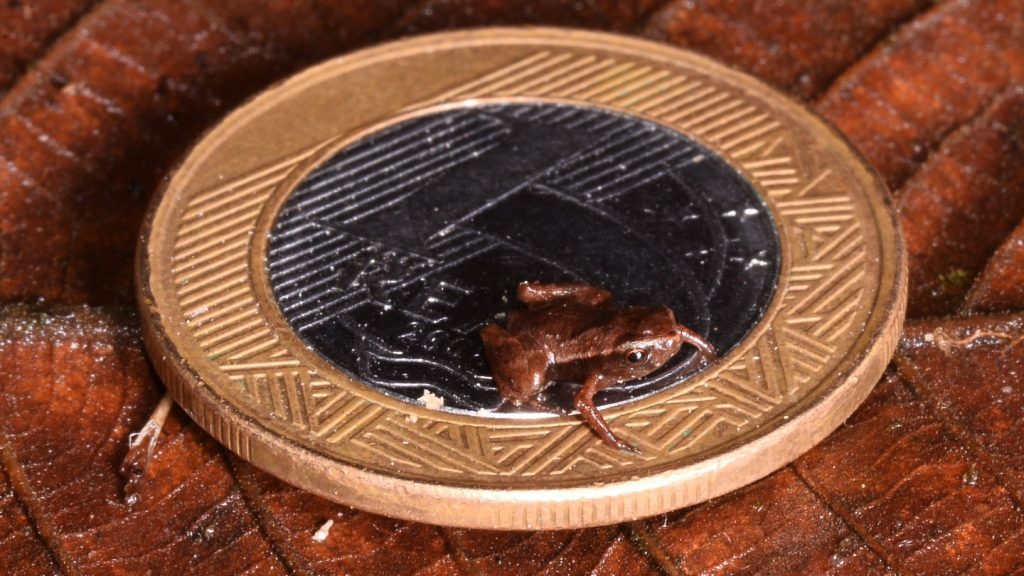
In the lush landscape of Bahia, Brazil, scientists found a creature that challenges the boundaries of the animal kingdom. The Brazilian flea toad, an incredibly tiny creature that can comfortably sit on a coin, has been named the world’s smallest backboned animal. It is also the smallest amphibian known to mankind.
The smallest of the small creatures
It all began more than ten years ago when Brachycephalus pulex, also known as the Brazilian flea toad, was initially identified in 2011. Despite its name, this is a frog, not a toad. Toads generally have drier, bumpier skin and prefer drier environments, while frogs have smoother, moister skin and are more commonly found near water.
Since the flea toad was first discovered, more specimens were collected over the years. Researchers carefully measured male and female specimens of the frog that is native to Brazil’s Atlantic coast. On average, males measure a tiny 7.10 millimeters in length, surpassing the previous record holder, the Paedophryne amauensis frog, by a fraction of a millimeter.
Both frogs live in the hot tropics, and this is no coincidence.

Notably, the smallest blue whaleblue whale
, the largest backboned animal, measures about 25.8 meters — at least 3,600 times larger than the flea toad.
According to Simon Loader, a zoologist at the Natural History Museum London, living in the tropics is expected. This distribution is linked to the challenges smaller animals face in regulating their body temperature in colder environments. Smaller animals tend to lose heat faster and thus struggle to maintain their body temperature more than animals with larger volumes. Brookesia nana, a nano-chameleon, (20 millimeters) and the bumblebee bat (wingspan of 145 millimeters), along with other small backboned animals, all live in warm habitats.
Furthermore, the study shows how extreme miniaturization can result in exceptional physical adaptations. The Brazilian flea toad lost its digits and developed extra bony structures on their skulls and vertebrae. A V-shaped pattern on its chest with dark brown stripes makes this frog easily recognizable if you can spot it, of course.
However, these adaptations come with their own set of challenges. For instance, some frogs in the Brachycephalus genus struggle with mobility and hearing due to their unusual inner ear structures. These evolutionary compromises demonstrate the delicate balance of nature and the remarkable diversity of life forms. Brazilian flea toads haven’t been formally tested for balance, although the researchers anecdotally report they’re decent hoppers.
There are still many corners to explore, particularly in dense rainforests. Anything smaller than about six millimeters long “would really challenge morphology and physics,” said primary writer and reptile expert Mirco Solé of the State University of Santa Cruz in Brazil. “But there's no way to know for sure.”
The results were published in the publication Zoologica Scripta.









